- News
- Reviews
- Bikes
- Accessories
- Accessories - misc
- Computer mounts
- Bags
- Bar ends
- Bike bags & cases
- Bottle cages
- Bottles
- Cameras
- Car racks
- Child seats
- Computers
- Glasses
- GPS units
- Helmets
- Lights - front
- Lights - rear
- Lights - sets
- Locks
- Mirrors
- Mudguards
- Racks
- Pumps & CO2 inflators
- Puncture kits
- Reflectives
- Smart watches
- Stands and racks
- Trailers
- Clothing
- Components
- Bar tape & grips
- Bottom brackets
- Brake & gear cables
- Brake & STI levers
- Brake pads & spares
- Brakes
- Cassettes & freewheels
- Chains
- Chainsets & chainrings
- Derailleurs - front
- Derailleurs - rear
- Forks
- Gear levers & shifters
- Groupsets
- Handlebars & extensions
- Headsets
- Hubs
- Inner tubes
- Pedals
- Quick releases & skewers
- Saddles
- Seatposts
- Stems
- Wheels
- Tyres
- Health, fitness and nutrition
- Tools and workshop
- Miscellaneous
- Buyers Guides
- Features
- Forum
- Recommends
- Podcast
TECH NEWS
Tour Tech 2016: Chris Froome's Pinarello Dogma F8 - is this the Tour de France winning bike?
With the 2016 Tour de France about to start, all eyes are on Team Sky’s Chris Froome and whether he can win the race for a third time. If he does the triple, he’ll do so aboard the same Pinarello Dogma F8 that was first introduced in 2014.
- 12 ways Team Sky develops those marginal gains
Team Sky’s hotel near Omaha Beach in Normandy was understandably busy when we arrived on Thursday morning, with an intense media spotlight on the British team and its leader. Following the team’s training ride in the rain, we took a closer look at Froome’s race bike before it was washed and prepped for the next day.
It is essentially the same bike with the same equipment that Froome and his teammates have been riding since for the past few seasons, since Pinarello introduced the updated Dogma F8 in 2014. There was no sign of a new version lurking in the back of the Team Sky truck, but it can only be a matter of time before there's a new version, given the typical three-year development cycle.
So similar is the bike, in fact, that we could have just copied and pasted our story from 2014. We haven't of course, and there are some subtle differences worth talking about. The most immediately obvious change is the custom paint job featuring a rhino that celebrates Froome’s Kenyan roots and his support for Unite for Wildlife, a charity that was set up to put an end to the illegal wildlife trade.
A reminder of the key design features of the Dogma F8 in case you’ve not been paying attention for the past couple of years. Pinarello worked with Jaguar to develop a frame that it claims is 12% stiffer, 47% more aerodynamic and 120g lighter than the old Dogma 65.1 Think it replaced. The Dogma F8’s frame is made from Toray T11001K composite and weighs around 860g in a 54cm frame size, according to Pinarello.
Shimano might have just unveiled a brand new Dura-Ace 9100 groupset, but Team Sky is still relying on the previous version of Dura-Ace Di2. This is a bit of a surprise, equipment manufacturers typically like to use the Tour de France as a huge advert for new products, but we presume the teams will be switching over in the off-season and riding it in 2017. And of course, Team Sky prefers to stick with tried-and-tested equipment in a race of such importance.
The neat thing about an electronic groupset is the ability to add extra shift buttons. Froome has the optional climbing shifter pod, stripped of unnecessary plastic casing and therefore saving weight, fitted to the centre of the handlebars. It can’t save more than a handful of grams, but this is a team obsessed with marginal gains remember.
While all of the team use regular round Dura-Ace chainrings, Chris Froome is still spinning the odd looking Osymetric chainrings, in a 52/38 configuration. The 52 tooth big chainring provides the equivalent of a 56 at the top of the stroke and a 48 at the bottom. It must clearly work for Froome, but it’s interesting that no other Team Sky rider has followed his lead and fitted the same chainrings.
One detail we’ve not noticed on Froome’s bike in previous years is the installation of pieces of plastic fitted above and below the bottom bracket shell, with a recess for the chain catcher on the piece of plastic fitted below the front mech.
When we asked the team mechanic about the reason for this, he told us it was to prevent the chain falling off using the non-round chainrings. We can’t recall Chris Froome having any incidents with a dropped chain during a race, but we know the racers don’t like to take any chances so it’s probably a case of better to be safe than sorry.
Standing 1.86m tall, Froome uses 175mm crank arms rather than the more common 172.5mm crank arms. Meanwhile, there’s an 11-28t cassette out back which should provide all the range he needs for the climbs of the Tour de France.
Froome’s bike is fitted with a 121mm aluminium PRO stem with a couple of carbon spacers below, and an aluminium PRO handlebar. Both are finished with a Team Sky blue stripe, which is now available in the shops.
A K-Edge out-front mount is used to attach his Garmin computer, which receives power data from the Stages power meter attached to the left crank arm. We’ve spotted double sided Stages prototype power meters in the past, but Froome was using a regular single sided version, the same as you can buy in the shops.
The Dura-Ace C50 wheel is the most popular wheel in the professional peloton and these were fitted to Froome’s bike. He’ll use these for the flat stages of the race but is likely to swap to a shallow section rim for the mountain stages. Shimano has launched new wheelsets as parts of its overhauled Dura-Ace 9100 groupset, and it’ll be interesting to see if Team Sky use them during the race.
When it comes to tyre width, 25 is the new 23. Most of the bikes we’ve been looking at this week before the race gets underway, Chris Froome is using Continental Competition ProLtd tubulars in a 25mm width.
Froome deviates from the regular Elite bottle cages used by the rest of Team Sky with these lightweight Elite Leggero minimalist cages.
Finally, a Fizik Antares saddle with carbon braided rails is Froome’s preferred saddle shape from the Italian company’s range of saddles. That bracket fitted at the back of the saddle is for the GPS receiver that all Tour bikes are now fitted with. The saddle isn’t level but is fitted with the nose slightly pointing down.
David worked on the road.cc tech team from 2012-2020. Previously he was editor of Bikemagic.com and before that staff writer at RCUK. He's a seasoned cyclist of all disciplines, from road to mountain biking, touring to cyclo-cross, he only wishes he had time to ride them all. He's mildly competitive, though he'll never admit it, and is a frequent road racer but is too lazy to do really well. He currently resides in the Cotswolds, and you can now find him over on his own YouTube channel David Arthur - Just Ride Bikes.
Latest Comments
- Shades 5 min 35 sec ago
I built up (well a bike mechanic did the work) a titanium gravel bike earlier this year; my vision was more all-road but the mechanic nudged me...
- FionaJJ 18 min 44 sec ago
Exactly. I have some sympathy for the 'but we don't have any/many buses' commentary on the £2/3 bus fare cap, but the best way to improve, or at...
- Hirsute 25 min 36 sec ago
Stolen from mattw of this parish But has he paid the £125 fee for the photo ?
- Hirsute 27 min 55 sec ago
Stop cyclists speeding in Regents Park "This is why you see those signs that say you shouldn't lock your bike to the railings..." LOL
- mattw 50 min ago
The mix after May 2025 will be interesting....
- chrisonabike 1 hour 2 sec ago
And why cyclists "fly through red lights" - approaching at the speeds any cyclist can achieve they're blue-shifted and look green...
- bluemoonday 1 hour 8 min ago
So true. The roads are almost lawless....
- chrisonabike 1 hour 26 min ago
Not news - it's just an extended Mathusian trap. In general populations of creatures grow and use more resources until they hit some limit. That...




















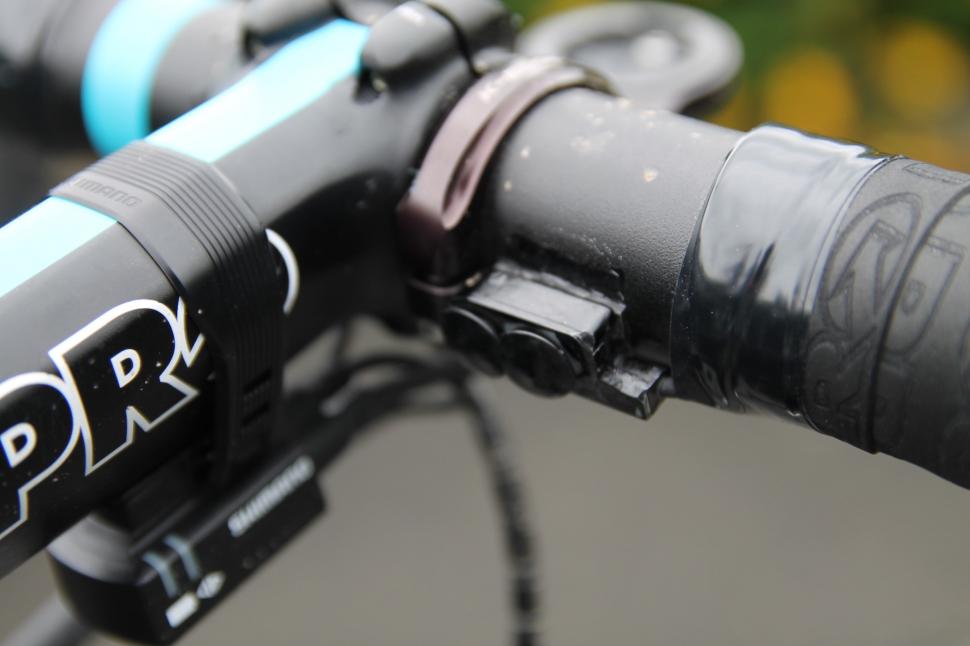
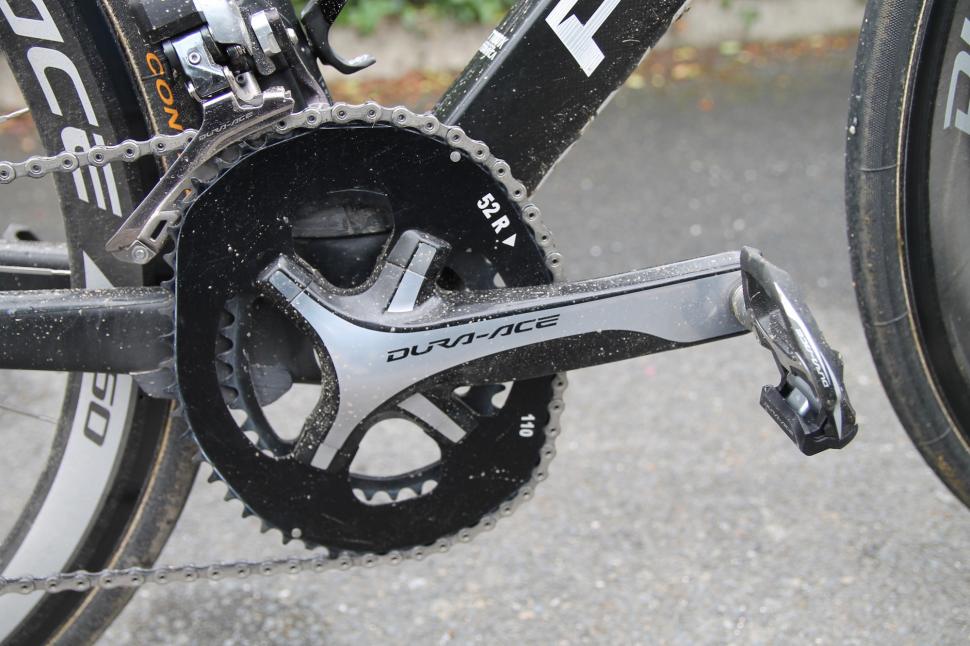
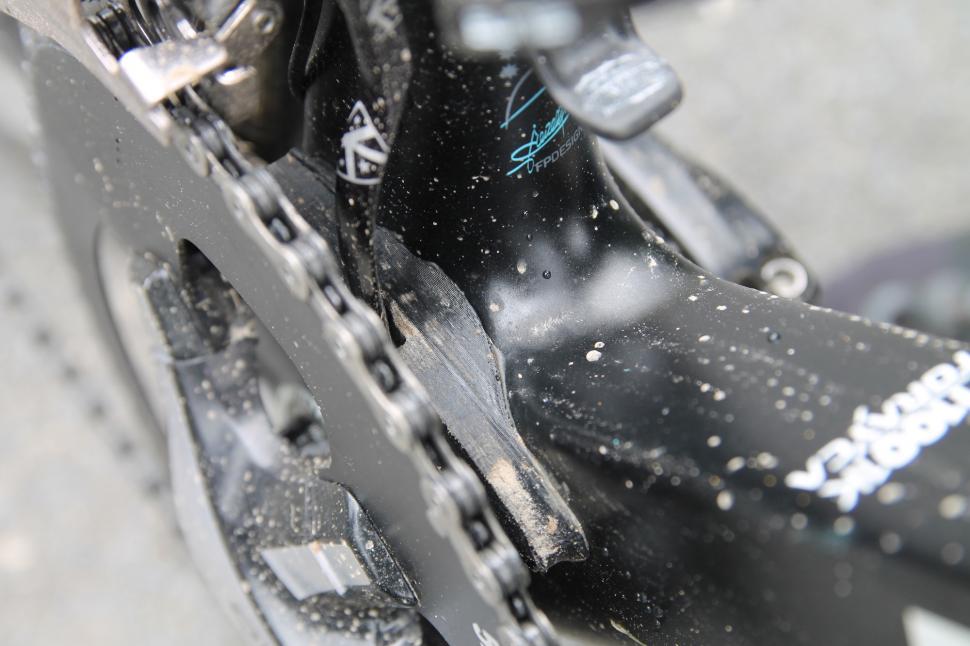

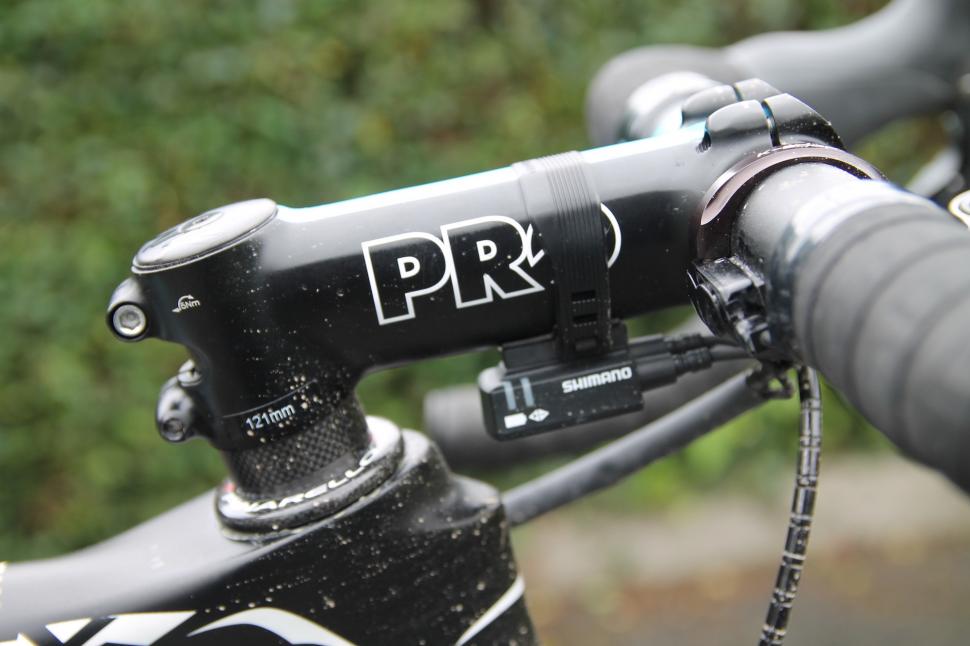
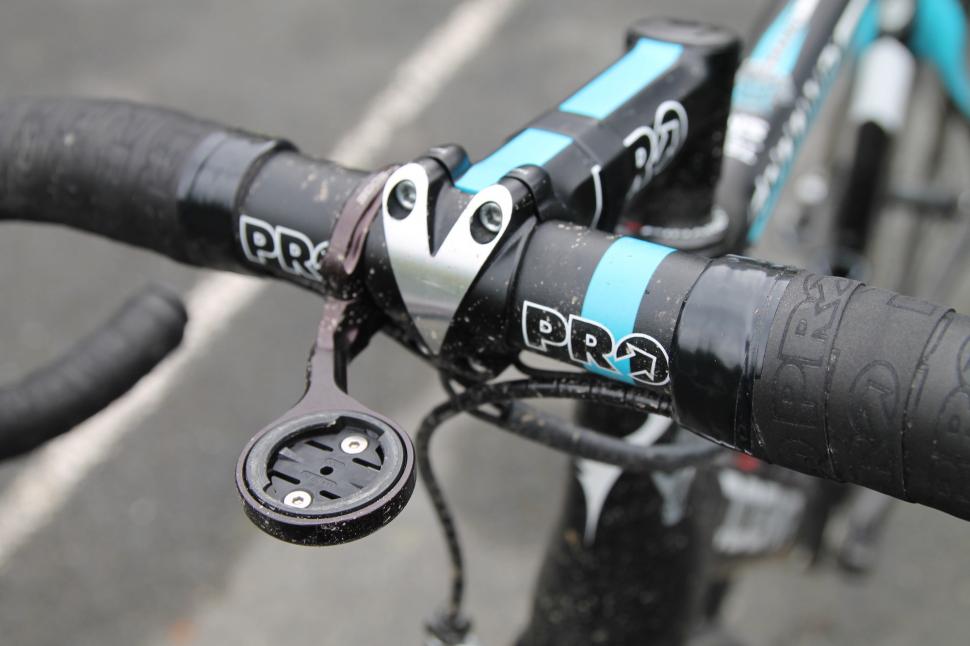
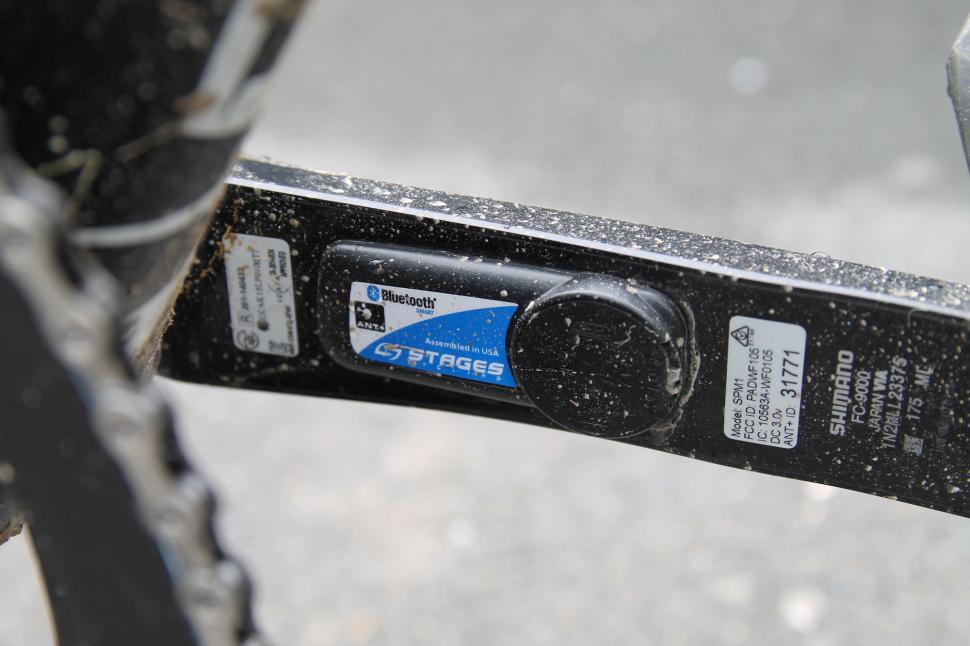



Add new comment
5 comments
Bit ugly. The finish seems nowhere on par to something like a topend Cannondale or Trek.
I agree batchy. Press-fit BB's are the worst thing the bike industry has come up with for years. External BB's are easy to fit and maintain and don't make any irritating noises. It's purely a cost cutting exercise. i took my forks off yesterday to trim the steerer and integrated headsets are the same. My Giant Defy Advanced has one and there are NO cups or races, literally cartridge bearings resting on the fork and sitting in the frame on the carbon.
Down with the bean counters I say .
.
My new bike has an internal bb30 bottom bracket. It started creaking after just 150 miles. I have never had problems with external bearings on any of my previous bikes and I see that Team Sky 's Pinnarello 's are also equipped with these "old" style b bks. Obviously the tech guys at Sky / Pinnarello know something more that many of the opposing teams.
Or is it just because external bearings are not a complete pain in the arse to replace or service!
yes, the bearings are so close together, it's no surprise that they don't provide a stable platform to pedal on. There are solutions. The Praxis is probably the best.
But my bb shell is 86.5mm wide therefore this puts the bearings pretty much in the same place on the spindle as external ones (68mm standard shell width)?